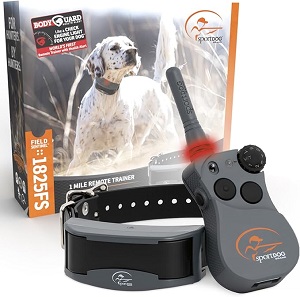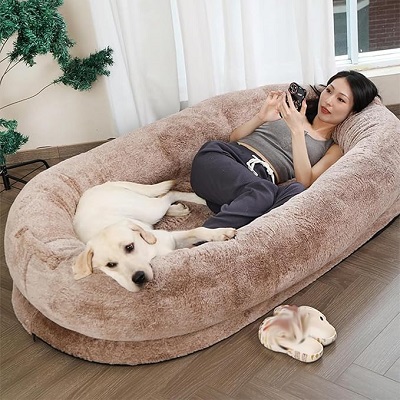.jpg)
The Top Reasons People Return Adopted Dogs (and How to Prevent It)
The Top Reasons People Return Adopted Dogs (and How to Prevent It)
Introduction
Adopting a dog is a wonderful experience, offering a loving home to an animal in need. However, it’s disheartening to learn that many adopted dogs are returned to shelters. According to various studies, the return rate for adopted dogs can range from 10% to 20%. Understanding the reasons behind these returns is crucial for prospective pet owners, shelters, and rescue organizations to prevent these situations and ensure that dogs find their forever homes.
In this article, we'll explore the most common reasons people return adopted dogs and offer practical advice on how to prevent these returns.
1. Behavioral Issues
Reason for Return
One of the most common reasons people return adopted dogs is due to behavioral issues. Dogs may display anxiety, aggression, excessive barking, or destructive behavior, leading owners to feel overwhelmed and unable to manage the situation.
Prevention Tips
- Research and Education: Before adopting, prospective owners should educate themselves about dog behavior and training techniques. Understanding a dog’s needs and behavioral tendencies can help prepare owners for any challenges.
- Training Programs: Encourage new adopters to enroll in training classes, focusing on basic commands and socialization skills. Early training can help mitigate behavioral problems and create a stronger bond between the dog and owner.
- Patience and Consistency: New dog owners should practice patience and consistency when dealing with behavioral issues. Establishing routines and using positive reinforcement can significantly improve a dog's behavior over time.
2. Lack of Time and Commitment
Reason for Return
Many people underestimate the time commitment required for dog ownership. A lack of time for training, socialization, and exercise can lead to frustration and ultimately result in returning the dog.
Essentials for Your Newly Adopted Pet
Welcoming a shelter pet into your life is a beautiful journey. Here are some handpicked items to help your new friend feel safe, loved, and right at home:
Prevention Tips
- Realistic Expectations: Before adopting, potential owners should evaluate their schedules and consider whether they have the time to dedicate to a dog. This includes daily walks, training sessions, and playtime.
- Gradual Transition: Encourage new owners to gradually introduce a dog into their lifestyle. Start with short periods of time and gradually increase the dog's involvement in family activities, helping them adjust without feeling overwhelmed.
- Support Networks: Shelters and rescues can offer resources for adopters, such as pet sitting services, doggy daycare recommendations, and support groups for new dog owners.
3. Health Issues
Reason for Return
Some dogs may have underlying health issues that become apparent after adoption, leading to expensive vet bills and the emotional strain of caring for a sick pet.
Prevention Tips
- Health Screenings: Shelters should conduct thorough health screenings before adoption. This includes vaccinations, spaying/neutering, and checking for common health issues.
- Transparent Communication: Shelters must communicate openly about any known health concerns and what prospective adopters should expect. This transparency helps potential owners make informed decisions.
- Financial Guidance: Provide information about pet insurance options and budget planning for potential veterinary costs. This can help prospective adopters prepare financially for the responsibilities of pet ownership.
4. Poor Match Between Dog and Owner Lifestyle
Reason for Return
A mismatch between a dog's needs and the owner's lifestyle can lead to returns. For example, active breeds may not be suitable for owners with a sedentary lifestyle, or a shy dog may struggle in a busy household.
Prevention Tips
- Behavioral Assessments: Shelters should conduct behavioral assessments to help match dogs with the right families. This includes evaluating a dog’s energy level, temperament, and compatibility with children or other pets.
- Discuss Lifestyle: Encourage prospective owners to discuss their lifestyle, activity level, and household dynamics with shelter staff. This helps in finding a dog that fits their lifestyle and needs.
- Trial Periods: Some shelters offer trial adoptions or foster-to-adopt programs, allowing families to take a dog home for a limited time to assess compatibility before making a long-term commitment.
5. Financial Constraints
Reason for Return
Unexpected financial burdens can lead to the return of an adopted dog. Costs related to food, supplies, grooming, and veterinary care can accumulate, particularly if a dog requires additional medical attention.
Prevention Tips
- Adoption Fees: Shelters can offer reduced adoption fees or grants for low-income families to help alleviate some initial costs.
- Budgeting Resources: Provide information and resources on budgeting for pet expenses, including tips on affordable care, such as low-cost clinics and community support programs.
- Foster Programs: Encourage fostering as an alternative for those who may not be ready for the full financial commitment of dog ownership but still want to help dogs in need.
6. Family Issues or Changes
Reason for Return
Changes in family dynamics, such as divorce, relocation, or new baby arrivals, can impact a family's ability to care for a dog. These life changes may lead to the unfortunate decision to return the dog.
Prevention Tips
- Supportive Services: Shelters can offer counseling or resources to help families facing challenges to keep their dogs, such as dog training or behavior modification programs.
- Open Communication: Encourage families to communicate openly about their challenges and explore options together before making the decision to return a dog.
- Community Resources: Provide information about community resources, such as pet-friendly housing or support groups for families with pets. This can help families navigate changes while keeping their pets.
Conclusion
While it can be heartbreaking to see dogs returned to shelters, understanding the reasons behind these returns allows shelters, adopters, and the community to work together to find solutions. By addressing common issues such as behavioral problems, time commitments, health concerns, lifestyle mismatches, financial constraints, and family dynamics, we can improve the adoption experience for everyone involved.
If you’re considering adopting a dog, take the time to educate yourself and prepare for the responsibilities of pet ownership. By doing so, you not only provide a loving home to a dog in need but also contribute to reducing the number of dogs returned to shelters, ensuring that every dog finds their forever family.
Affiliate Products
We may earn a small commission when you shop through our links — it helps us keep sharing love and care for every dog out there, at no extra cost to you.
Up to 75% Discount

Dog Collar with Health Monitoring
BUY NOW »
Up to 55% Discount

Luxury Faux Furhuge Napping Bed
BUY NOW »

